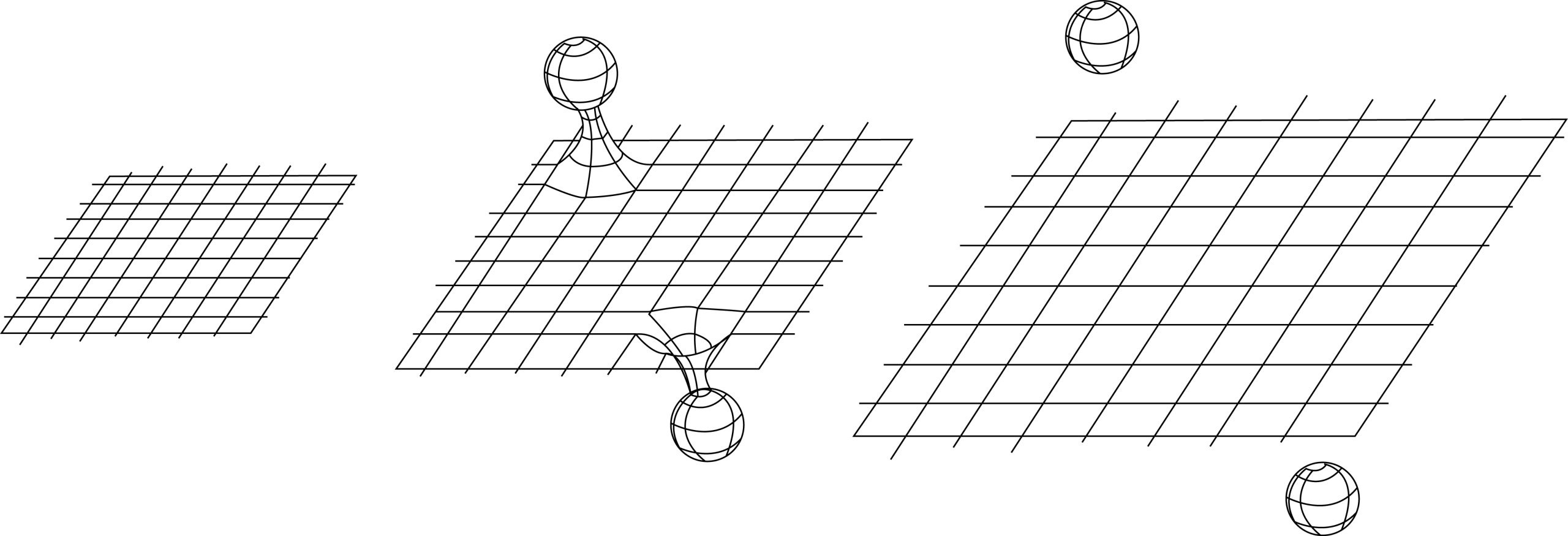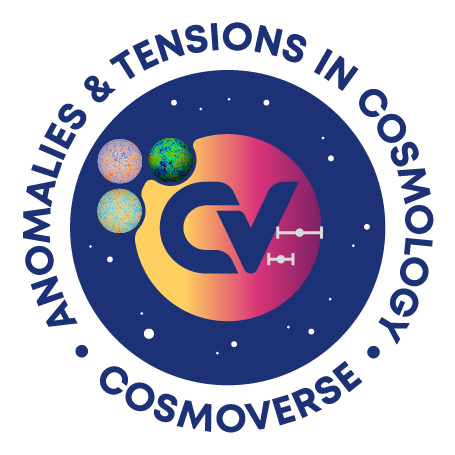Einstein’s theory of General Relativity (GR) has not only changed our view on gravity but also had deep impact on the construction of modern physical theories itself. Indeed, GR, initially conceived as a framework for describing the gravitational field in a relativistic manner, has produced novel conceptual entities. Good examples are black holes and gravitational waves, which in the last decades have been the main engine of fundamental theoretical physics investigations, due to the high-tech machinery for their detection and observationally analysis. Historically though, the first real consequence of GR came from the study of the spacetime associated to our whole Universe.
The main entity of GR is the spacetime metric g(x), which is a solution of the well known Einstein’s field equations. The metric gives us the correct motion of a particle propagating through a (non-flat) space and time. In this framework, gravity is an intrinsic feature in this geometrical interpretation through the metric g(x).
The first attempts to find solutions of the Einstein’s equations were performed by studying how the homogeneous matter content of the Universe sourced the spacetime. These were worked out by Einstein and De Sitter, and then extended by Friedman and Lemaitre, to include the possibility for a dynamical evolution of space, i.e., a time dependent metric. Lemaitre was also responsible to give a concrete interpretation of the physical solution entailing an expanding universe and how it related with the observed redshift of the galaxies. Following this result many other important features of the dynamics and evolution of the Universe became clear during the following decades, culminating in today’s Lambda-CDM model, where features like Dark Matter and Dark Energy are included, from which we still know little information and current research is ongoing.
Parallel to these investigations, the construction of the Standard Model of Particles was successfully achieved. The theoretical framework, Quantum Field Theory, correctly described all the available experimental data of elementary particles and their interactions. One of the fundamental pillars of this framework is the assumption of a Minkowski spacetime. This particular solution of the Einstein’s equations contains symmetries which allows to construct a consistent notion of particle state and consequently of scattering amplitude which then can be tested in the laboratory. An important question is what happens in the case of a particle/field, e.g., the electron in the presence of a curved non-Minkowskian spacetime.
At the beginning of the sixties, Leonard Parker decided to work for his PhD thesis on the intersection between the above-mentioned frameworks: quantum field theory and general relativity. When dealing with non-flat solutions of Einstein equations, such as the expanding spacetime of our Universe, the construction of particle states is no longer possible. Parker obtained consequently that the spacetime, which is now dynamically evolving in time, spontaneously produces particles from the vacuum. In particular, if we imagine a Universe that started with an early time Minkowski spacetime, evolving them to an expanding type of spacetime, and then finishing again in a flat Minkowskian region, one can calculate the net particle number produced due to this expansion. This was exactly what Parker did, and he found that particles where indeed produced.
At that time, this result was thought to be just a curiosity since a time dependent gravitational field such as our own Universe, evolves too slow to produce a sufficient amount of particles to be detected in the first place. However, the later introduction of the Inflationary phase during the first instants of our Universe introduced the perfect playground for this effect. Indeed, the rapid expansion of spacetime during Inflation generates quantum fluctuations analogue to the particle production phenomena that Parker predicted in his thesis. The interesting feature of this case is that these (quantum) fluctuations have an imprint in current observations and are believed to give rise to the small inhomogeneities observed in the cosmic microwave background and that are the gravitational seeds that generated the different observed structure in the Universe.

The importance of the generation of quantum effects during the early Universe has been realized during the last decades, and a lot of effort has been done to clarify the role of this in the formation of standard model matter, also known as reheating, production of gravitational or creation of Dark Matter candidates, among others. One of the main open problems of current research in Cosmology is how to quantify these phenomena and compute potential observables that can be measured in upcoming and future detectors and telescopes.
References:
- Cosmology and Controversy: The Historical Development of Two Theories of the Universe. Helge Kragh. Princeton, N.J., Princeton University Press, 1996 2. Creation of quantized particles, gravitons and scalar pertubations by the expanding universe, Leonard Parker, J. Phys. Conf. Ser. 600, 2015
- Fifty years of cosmological particle creation, Leonard Parker and Jose Navarro Salas, arXiv:1702.07132
